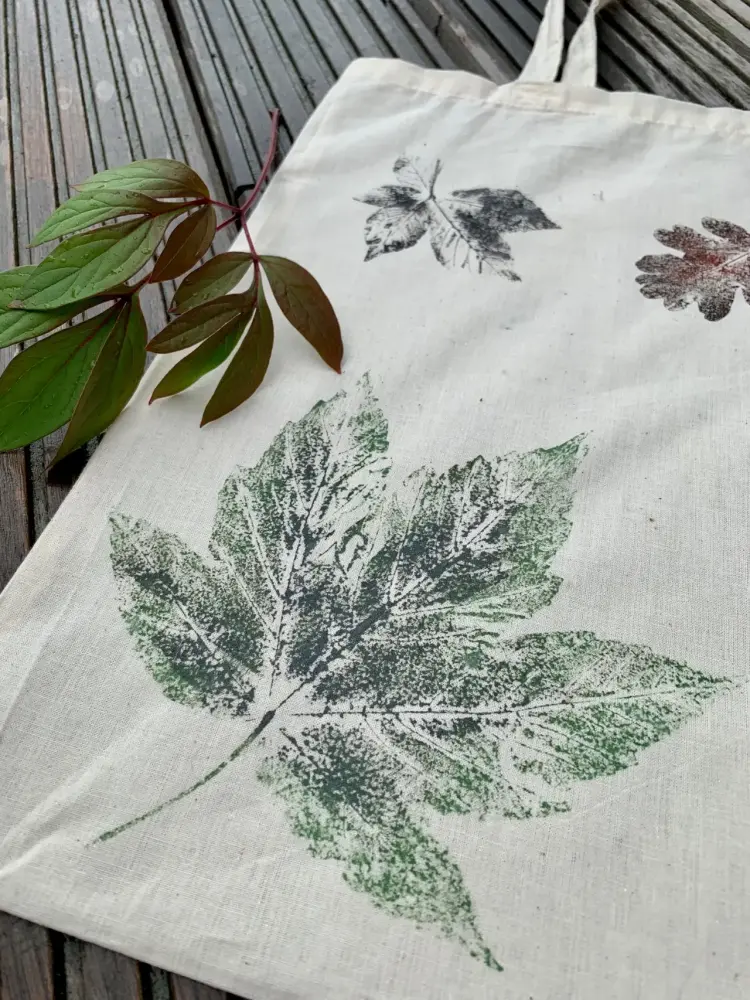blog 4 Eco-printing
Nature Printing with Plants and Flowers (for Children)
I’d love to share a simple way of printing with plants — perfect to do with children.
The eco-print courses we offer here are quite a complex process. It’s not something you can easily do at home. You need a lot of materials, and to get a beautiful result, you really have to know what you’re doing. So I completely understand that you’re not likely to try eco-printing at home, especially with kids. 🍃
Another option is to use the cyanotype or blue-print technique. But that involves chemicals — not exactly ideal to work with either.
So, two summers ago, I tried something different with my two youngest children: printing on fabric and paper, using nothing but leaves, flowers, and a little paint.
We went into the forest together and collected all sorts of leaves, flowers, and grasses. The foraging alone was fun, but I noticed something else too: they started looking at their surroundings differently. Suddenly, every little leaf held potential to become something beautiful. 🍂
Before we started, I made an agreement with them: one leaf or flower per plant or tree — and we’d leave the rest for the animals.
I also explained which plants they should avoid, like giant hogweed (even though those big leaves look very tempting). I brought a plant guide filled with fun facts. For instance, I told them how you can make ointment from nettles — for mosquito bites, or even to soothe nettle stings themselves. They thought that was hilarious. But once we got home and tried it… it actually worked. 😉
With our gathered treasures, we got to work in the garden.
⸻
How to do it
• Use old sponges and a little bit of paint to dab the veined side of the leaf. Less is more — just a thin layer of paint is enough.
• Place the leaf paint-side down on fabric or paper.
• Place a clean sheet of paper over the top.
• Press the leaf firmly using:
• A hammer (tap gently).
• An old iron (warm, no steam).
• A rubber roller.
• Or, if you have one, run it through a printing press.
Whichever tool you choose, make sure the leaf doesn’t slide.
⸻
The result? A beautiful print of your leaf or flower!
You can also experiment with colour. For example, dab the edges of the leaf with a lighter or darker shade than the centre — this gives a lovely, natural gradient.
Flowers often release their own colour naturally, so they usually don’t need to be painted.
⸻
Have fun!
⸻
Stay inspired
From natural inks to hand-shaped ceramics — here I share recipes, stories, and quiet craft from my studio in Norway.
Want to read more? Follow Lilly’s Fable on Instagram or sign up for the newsletter.




